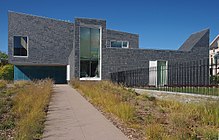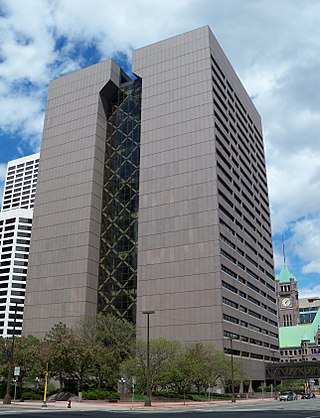
Hennepin County is a county in the U.S. state of Minnesota. Its county seat is Minneapolis, the state's most populous city. The county is named in honor of the 17th-century explorer Father Louis Hennepin. The county extends from Minneapolis to the suburbs and outlying cities in the western part of the county. The county's natural areas are covered with extensive woods, hills, and lakes.

Alvesta Municipality is a municipality in Kronoberg County, southern Sweden. Its seat is in Alvesta.
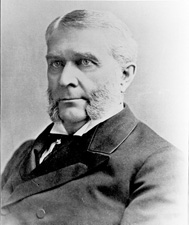
William Drew "W.D." Washburn, Sr. was an American politician. He served in both the United States House of Representatives and the United States Senate as a Republican from Minnesota. Three of his seven brothers became politicians: Elihu B. Washburne, Cadwallader C. Washburn, and Israel Washburn, Jr. He was also cousin of Dorilus Morrison, the first mayor of Minneapolis. He served in the 46th, 47th, 48th, 51st, 52nd, and 53rd congresses.

The Minneapolis Institute of Art (Mia) is an arts museum located in Minneapolis, Minnesota, United States. Home to more than 90,000 works of art representing 5,000 years of world history, Mia is one of the largest art museums in the United States. Its permanent collection spans about 20,000 years and represents the world's diverse cultures across six continents. The museum has seven curatorial areas: Arts of Africa & the Americas; Contemporary Art; Decorative Arts, Textiles & Sculpture; Asian Art; Paintings; Photography and New Media; and Prints and Drawings.

Swedish Americans are Americans of Swedish descent. The history of Swedish Americans dates back to the early colonial times, with notable migration waves occurring in the 19th and early 20th centuries and approximately 1.2 million arriving between 1865–1915. These immigrants settled predominantly in the Midwest, particularly in states like Minnesota, Illinois, and Wisconsin, in similarity with other Nordic and Scandinavian Americans. Populations also grew in the Pacific Northwest in the states of Oregon and Washington at the turn of the twentieth century.
Nordic and Scandinavian Americans are Americans of Scandinavian and/or Nordic ancestry, including Danish Americans, Faroese Americans, Finnish Americans, Greenlandic Americans, Icelandic Americans, Norwegian Americans, and Swedish Americans. Also included are persons who reported 'Scandinavian' ancestry on their census. According to 2021 census estimates, there are approximately 9,365,489 people of Scandinavian ancestry in the United States.
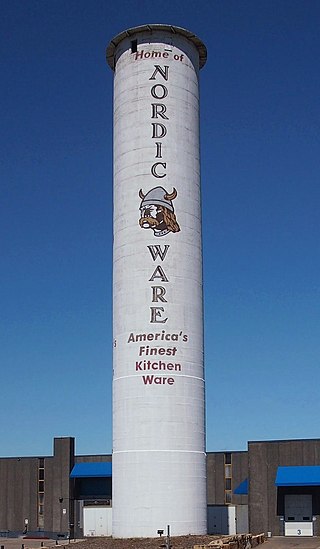
The Peavey–Haglin Experimental Concrete Grain Elevator is the world's first known cylindrical concrete grain elevator. It was built from 1899 to 1900 in St. Louis Park, Minnesota, United States, as an experiment to prove the design was viable. It was an improvement on wooden elevators that were continually at risk of catching fire or even exploding. Its cylindrical concrete design became the industry standard in the United States, revolutionizing grain storage practices. After its initial experiments, the Peavey–Haglin Elevator was never again used to store grain. Since the late 1960s it has been maintained on the grounds of the Nordic Ware company and is painted with their name and logo.

Minneapolis, officially the City of Minneapolis, is a city in the state of Minnesota and the county seat of Hennepin County. As of the 2020 census the population was 429,954, making it the state's most populous city. Nicknamed the "City of Lakes", Minneapolis is abundant in water, with thirteen lakes, wetlands, the Mississippi River, creeks, and waterfalls. Minneapolis was the 19th-century lumber and flour milling capital of the world and has preserved its financial clout into the 21st century. It occupies both banks of the Mississippi River and adjoins Saint Paul, the state capital of Minnesota.

The Washburn-Fair Oaks Mansion District is a historic district in the Whittier neighborhood of Minneapolis, Minnesota, United States, centered on Washburn-Fair Oaks Park. The city of Minneapolis designated a district bordered by Franklin Avenue, Fourth Avenue South, 26th Street East, and First Avenue South. A smaller district, listed on the National Register of Historic Places, includes seven mansions along and near 22nd Street East.

The Hennepin County Sheriff's Office (HCSO) is the sheriff's office for Hennepin County in the U.S. state of Minnesota. HCSO's main offices are in Minneapolis City Hall in the county seat of Minneapolis.

The John R. Cummins House is a historic house in Eden Prairie, Minnesota, United States, a suburb southwest of Minneapolis. The house is listed on the National Register of Historic Places.
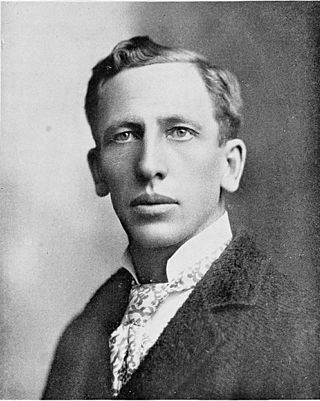
Swan J. Turnblad was an American newspaper publisher. Turnblad was the manager of the Svenska Amerikanska Posten, a Swedish language newspaper in Minneapolis, Minnesota. Later in his life he donated property and money to help create the American Swedish Institute.

The State Theatre is a historic theatre in Minneapolis, Minnesota, USA. It is one of four restored theatres in the Hennepin Theatre District.

Occupy Minneapolis (OccupyMN) is a grassroots collaboration that began in October 2011 with a series of demonstrations in Minneapolis, Minnesota. Protesters have staged numerous occupations, most notably of the Hennepin County Government Center plaza.

Hennepin History Museum is a museum dedicated to the history, people, and communities of Hennepin County, Minnesota, United States. The museum provides in-house exhibits, history-themed programming, and social events throughout the year.
Svenska Sällskapet was formed in Minneapolis, Minnesota in 1925 by Nils Leon Jansson, Swedish consul to Minnesota and the NW States and served as president from 1925 to 1931. Membership at that time was limited to 50 men of Swedish birth or descent and of good character, and who have demonstrated sympathy with the aims and purposes with the Society and who will add to the credit of the Society.

Sami Blood is a 2016 Swedish coming-of-age drama film written and directed by Amanda Kernell, as her feature film debut. The first 10 minutes of the film comes directly from the short film Stoerre Vaerie. Stoerre Vaerie is Kernell's first film with Sami themes and it was nominated for the Short Film Grand Jury Prize at the Sundance Film Festival, Park City, Utah, United States.
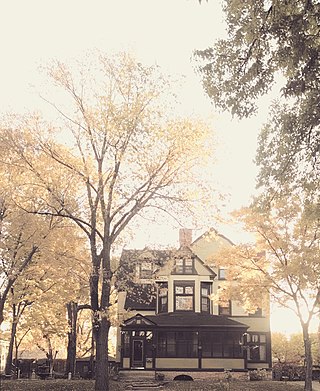
Albert Harrington was a grain merchant in Minnesota. He is best known as a member of the G. W. Van Dusen Company. He was a member of the Minneapolis Chamber of commerce; he built the Belt Line elevator in Superior, Wisconsin, in 1892; and he was the President of the Belt Line Elevator Company from 1892 to 1895. This was part of the 10-block “Golden Mile” on Park Avenue between 18th and 28th Streets.




